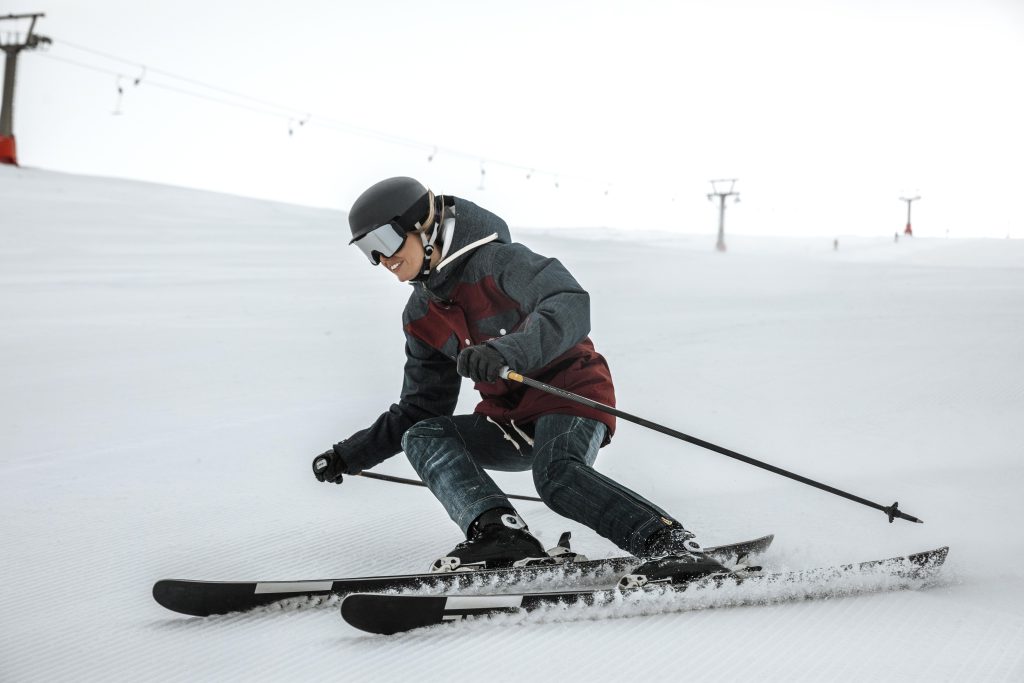
When it comes to enjoying a day on the slopes, dressing appropriately for skiing is essential for both comfort and safety. The right clothing and layering system can protect you from the cold, keep you dry, and ensure optimal performance. In this comprehensive guide, we will explore the various aspects of dressing for skiing, including the importance of layering, the types of clothing to consider, and essential accessories to enhance your skiing experience.
Layering System for Skiing
- Base Layer: The base layer is the foundation of your skiing outfit. It should be moisture-wicking and insulating to keep you warm and dry. Opt for synthetic or merino wool fabrics that effectively move sweat away from the body and provide thermal insulation. Avoid cotton, as it retains moisture and can leave you feeling cold and uncomfortable.
- Mid-Layer: The mid-layer adds insulation and helps retain body heat. Fleece jackets, down vests, or synthetic insulated jackets are ideal choices. These garments should be breathable and provide warmth without bulkiness. Consider the weather conditions and your personal preference when selecting the appropriate mid-layer.
- Outer Layer: The outer layer, often referred to as the shell, protects you from wind, snow, and moisture. Look for waterproof and breathable ski jackets and pants made with technical fabrics like Gore-Tex or similar materials. These materials prevent water from penetrating while allowing sweat to escape, keeping you dry and comfortable throughout the day.
Clothing for Skiing
- Ski Jacket: A high-quality ski jacket is a vital piece of your skiing attire. It should have waterproof and windproof properties, sealed seams, adjustable cuffs, and a detachable hood. Look for features like ventilation zippers, multiple pockets for storage, and a powder skirt to keep snow out.
- Ski Pants: Invest in waterproof and windproof ski pants with reinforced knees and seat for durability. Adjustable waistbands, articulated knees, and ventilation zippers are desirable features. Make sure they have ample room to allow for movement and layering underneath.
- Base Layers: Choose moisture-wicking, thermal base layers that fit snugly to your body without restricting movement. Look for long-sleeved tops and full-length bottoms made of synthetic or merino wool materials. Avoid cotton, as it absorbs moisture and takes longer to dry.
- Mid-Layers: Fleece jackets, synthetic insulated jackets, or down vests make excellent mid-layer options. They provide warmth while allowing breathability. Opt for lightweight and compressible garments that can be easily layered or packed away when not needed.
- Socks: Invest in high-quality ski-specific socks made of moisture-wicking materials. Avoid cotton socks, as they retain moisture and can cause discomfort. Look for socks with padding in high-impact areas and seamless construction to prevent blisters.
- Accessories: a. Hat or Helmet: Keep your head warm with a snug-fitting beanie or an insulated helmet designed for skiing. Helmets provide added protection and are recommended for safety. b. Neck Gaiter or Balaclava: Protect your face from cold winds and snow with a neck gaiter or balaclava. Look for moisture-wicking and breathable fabrics. c. Gloves or Mittens: Invest in waterproof and insulated gloves or mittens that provide dexterity and warmth. Ensure they have adjustable cuffs and a removable liner for added versatility. d. Goggles: Choose goggles with a wide field of vision, anti-fog coating, and UV protection. Opt for interchangeable lenses to adapt to varying light conditions.
Tips for Dressing for Skiing
- Layering: Start with a moisture-wicking base layer, add insulating mid-layers, and finish with a waterproof and breathable outer layer. Layering allows you to adjust your clothing according to the weather conditions and your activity level.
- Proper Fit: Ensure that your clothing allows for a full range of motion without being too tight or restrictive. Avoid excessively baggy or loose garments that can hinder movement and trap cold air.
- Ventilation: Look for garments with ventilation options, such as underarm zippers or mesh-lined vents, to regulate body temperature and prevent overheating.
- Check the Weather: Stay updated on the weather conditions and adjust your clothing accordingly. Layering allows you to add or remove layers as needed.
- Test Your Gear: Before hitting the slopes, make sure your clothing and equipment are functional and properly fitting. Try them on and move around to ensure comfort and functionality.
Skiing Apparel Checklist
| Clothing | Recommendations |
|---|---|
| Base Layer | Moisture-wicking long-sleeved top and full-length bottoms (synthetic or merino wool) |
| Mid-Layer | Fleece jacket, synthetic insulated jacket, or down vest |
| Ski Jacket | Waterproof, windproof, and breathable with sealed seams and adjustable features |
| Ski Pants | Waterproof, windproof, and durable with adjustable waistbands and reinforced areas |
| Socks | Moisture-wicking ski-specific socks with padding and seamless construction |
| Accessories | Hat or helmet, neck gaiter or balaclava, gloves or mittens, goggles |
Dressing appropriately for skiing is crucial to ensure comfort, warmth, and safety on the slopes. The layering system, consisting of a moisture-wicking base layer, insulating mid-layers, and a waterproof outer layer, allows you to adapt to changing weather conditions. Select high-quality ski-specific garments and accessories that provide insulation, breathability, and protection from the elements. By following these guidelines and considering personal preferences and weather conditions, you’ll be well-prepared to enjoy a fantastic skiing experience while staying comfortable and protected.